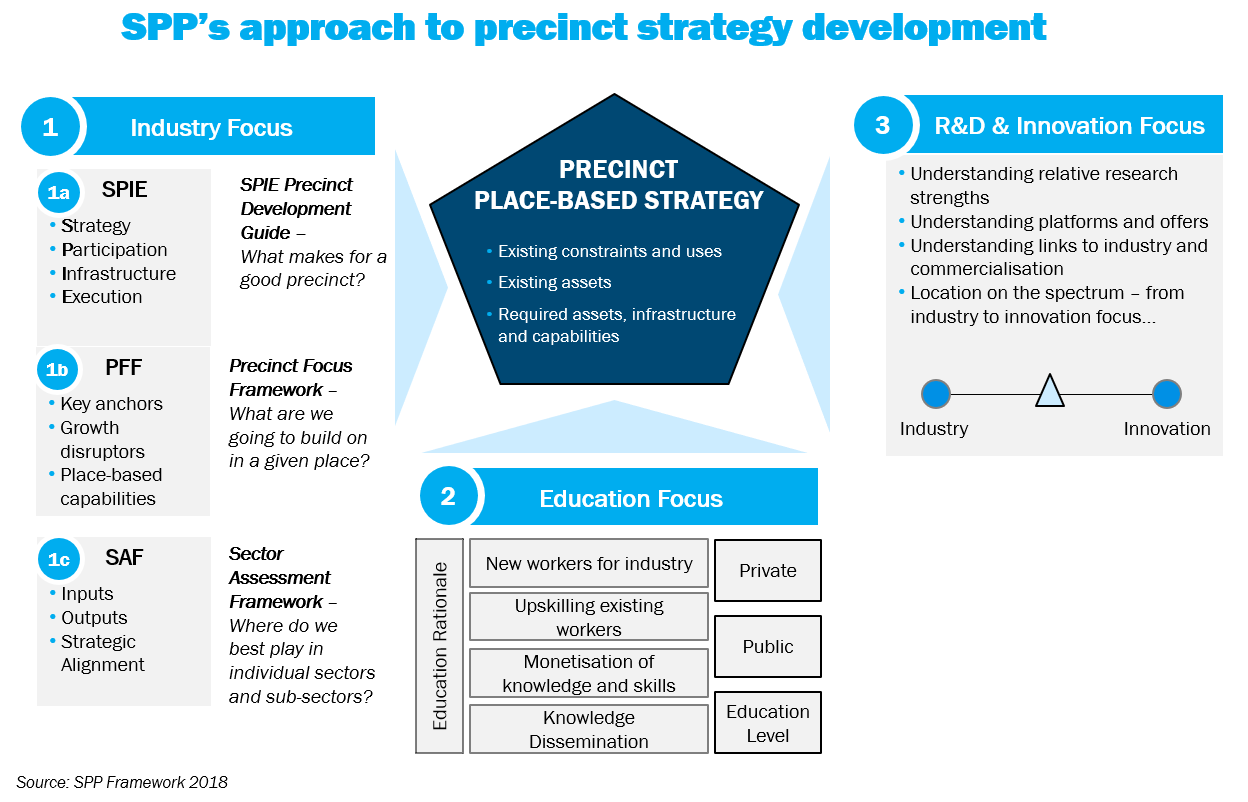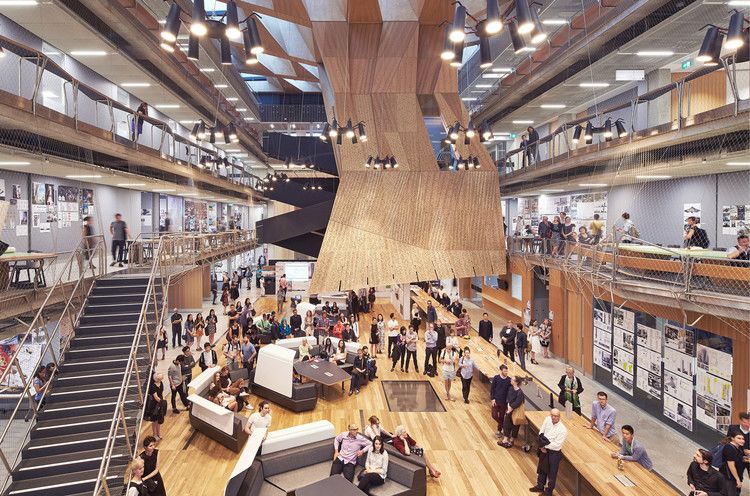Precincts Planning & Development

Why precinct development?
Governments around the world have identified the potential to rejuvenate former inner-city industrial sites into areas of significant re-development and economic potential.
As cities grow and environmental concerns restrain cities from expanding laterally, development of these precincts offers the opportunity to breathe new life into inner-city, and often economically weaker, areas.
Whilst these precincts are designed to spark immediate economic activity and employment, they also have the capacity to grow and support continued economic development, enhance existing competitive advantages and capabilities, and develop new areas of expertise.
Why SPP?
Through numerous high-impact projects, SPP has developed a reputation as a thought-leader in precinct development. We have articulated the value and potential of these developments to government and private institutions alike, and identified the required steps and roles for stakeholders to help unlock this potential.
We have developed a range of frameworks through which to support precinct development, and identified the specific interventions and effective governance arrangements necessary for maximum impact.
This site outlines our capabilities in, and approach to, guiding decision-making throughout the development of a precinct - from planning through to implementation.
Place based strategies can develop and leverage competitive advantage through focused development .

Economic growth and employment are a constant priority for governments
Over recent years there has been an increasing trend of governments taking a “Place Based” view of initiatives to spark greater economic activity. Developing a place based strategy is not a new concept with many regions employing some form of "Cluster", "Industry Precinct", “Innovation Hub" or"Economic Zone" strategy to plan the strategic location and connection of complementary organisations together within a geographic region. Several precincts have been so successful in creating a symbiotic industry eco-system they have now become synonymous with the products and services they produce, with prime examples including:
- Silicon Valley – Software technology and venture capital
- Wall Street – Financial markets
- Milan– Fashion and design
- Monte Carlo – Gambling and entertainment
The grouping and networking of like organisations makes intuitive sense to bolster a unique specialised competitive advantage.
Place based strategies have proven to deliver many benefits to a region, including:
- A critical mass of activity to enable greater specialisation and innovation of participants within the value chain
- A strong brand association with the region’s capabilities which can assist in attracting investment, workforce talent, and customers
- Alignment of education and research activities with industry needs
- Greater collaboration and dissemination of industry best practice

Defining the future state strategic focus of a precinct is a key challenge in strategy development.

Establishing an approach to define the future state strategic focus of a precinct is a key challenge in strategy development.
While it is clear that precincts can deliver significant benefits and many precincts have successfully evolved over time, a key question still remains;
How should governments approach identifying an industry and capability focus that best drives economic outcomes?
Designing a place based strategy inherently involves an abundance of economic and geographic data, competing strategic priorities and a diverse range of potential focus areas. This wealth of information can easily complicate the process of developing and articulating a clear precinct vision.
SPP has developed an overarching framework to guide development of a precinct strategy.


SPP’s overarching framework has assisted governments and universities to systematically develop a place based strategy in line with specific objectives and reflecting the unique characteristics of the place.
A set of tools underpin our approach to identifying a complementary mix of industry, education, R&D and innovation elements.
Combining each of these elements into an aligned strategy enables a future state vision which will unite the diverse stakeholders of the precinct.
A set of focus industries define the primary economic activity within a precinct.
Defining the key industry sectors that will underpin the economic activity of the precinct is a critical first step in setting an overarching future vision.
SPP’s precinct tool-set is based around the key questions posed in assessing and identifying a set of target industry sectors.
SPIE Precinct Development Guide:
- What strategy, participants, infrastructure and execution are required make this precinct a success?
Precinct Focus Framework:
- What are we going to build on in a given place?
Sector Assessment Framework:
- Where do we best play in individual sectors and sub-sectors?
What makes a precinct strategy successful?

Education plays a key role in supporting industry growth and collaboration.
Educational institutions are a critical element for supporting industry to compete in knowledge intensive sectors and to promote greater collaboration. The specific role of Education within a precinct requires a rationale which considers the needs of industry and government to:
- Prepare the future workforce with the skills needs of industry
- Upskillthe existing workforce
- Commercialise intellectual property, knowledge and skillsets
- Disseminate knowledge within and beyond the precinct
Australia has a strong Research & Development capability which precincts should foster to enhance industry competitiveness.
SPP has worked collaboratively with industry, education and R&D organisations to identify key opportunities to align research activities with industry needs.A broad range of initiatives are available to enhance the economic outcomes of research including co-investment in infrastructure, formation of partnerships,and attracting research intensive industry.
Most critically, the physical place is a central element of any place based strategy.
A detailed understanding of the physical place is vital to bring together a comprehensive place based strategy which reflects the unique geography, assets,infrastructure, connections and history of the area
The SPP approach ensures the scale of a precinct transformation plan is physically feasible to implement within the actual site considering available land area, develop-able floor space, work space density, planning controls and constraints.

SPP is a high impact management consulting firm with a reputation as a thought leader in precinct development.

Strategic Project Partners is a high impact management consulting firm.
We work with CEOs and Senior Executives on difficult strategic and operational challenges.
Established in 2005, SPP has delivered successful outcomes for a broad range of commercial and Government sector clients.
As a result, we have strong relationships with many businesses, from Top 50 ASX companies through to small enterprises.
When we deliver our projects, whether it’s a strategic study or the implementation of large-scale change, we focus on:
- Strong project management
- Clarity of outcome
- An obsessive focus on project benefits
- Robust, fact based analysis
- Simple communication
- Bringing experience to bear
Click below to read more about SPP's thought leadership on:


